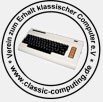CAD, first part:
This corresponds to logic at the edge of the board, opposite side from the connector. Enable pin number 6 at the decoders is connected to the rest of the logic located near the connector. Not gate (pins 8 and 9) is unused. This part is coming after lunch.
Notation is weird if the letters are to be considered... First because in the case of gates another letter is appended. Second, "U" must be prefixed, as in CBM documentation because ICs at row "C" would have a reference conflicting with the capacitors.
I imagine there is a lot of room for improvement. If you see anything wrong, or you have any idea that could improve it don't hesitate to say it. ![]()
Regards,
Jaume

